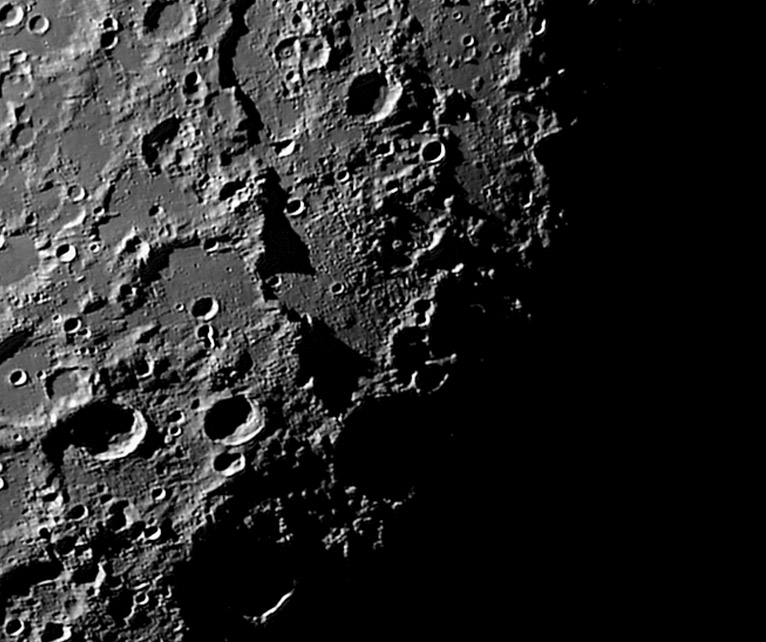Difference between revisions of "October 30, 2010"
| (4 intermediate revisions by the same user not shown) | |||
| Line 1: | Line 1: | ||
__NOTOC__ | __NOTOC__ | ||
=Arm-Waving= | =Arm-Waving= | ||
| + | <!-- Start of content --> | ||
<!-- ws:start:WikiTextHeadingRule:1:<h1> --> | <!-- ws:start:WikiTextHeadingRule:1:<h1> --> | ||
<!-- ws:start:WikiTextLocalImageRule:16:<img src="/file/view/LPOD-Oct30-10.jpg/174891593/LPOD-Oct30-10.jpg" alt="" title="" /> -->[[File:LPOD-Oct30-10.jpg|LPOD-Oct30-10.jpg]]<!-- ws:end:WikiTextLocalImageRule:16 --><br /> | <!-- ws:start:WikiTextLocalImageRule:16:<img src="/file/view/LPOD-Oct30-10.jpg/174891593/LPOD-Oct30-10.jpg" alt="" title="" /> -->[[File:LPOD-Oct30-10.jpg|LPOD-Oct30-10.jpg]]<!-- ws:end:WikiTextLocalImageRule:16 --><br /> | ||
| − | <em>image by [mailto:astrogarban@gmail.com | + | <em>image by [mailto:astrogarban@gmail.com Julio César Monje Bravo], Madrid, Spain</em><br /> |
<br /> | <br /> | ||
The Altai Scarp is one of the most dramatic basin rings on the Moon, casting long shadows in the lunar afternoon. But as Julio's image shows, the scarp is not continuous, taking an abrupt dip along its southwest edge. Two long shadows bracket a place where the scarp basically disappears. The broad flat plain to the left of the gap is the floor of an old battered crater, Rothman G. Did G form before or after the scarp? If afterward, that could account for the lowering of the scarp wall - the expanding shockwave from the crater-forming impact destroyed the basin rim. But the debris of the collapsed scarp isn't visible to the right. This area is covered by lava flows that perhaps covered the debris. If the crater formed first, the subsequent formation of the scarp would have cut right through a low spot - the crater rim and floor, so that the scarp would be lower than expected. This seems like a more reasonable explanation, but it is really arm-waving. That is what it is called when interpretation gets ahead of facts. <br /> | The Altai Scarp is one of the most dramatic basin rings on the Moon, casting long shadows in the lunar afternoon. But as Julio's image shows, the scarp is not continuous, taking an abrupt dip along its southwest edge. Two long shadows bracket a place where the scarp basically disappears. The broad flat plain to the left of the gap is the floor of an old battered crater, Rothman G. Did G form before or after the scarp? If afterward, that could account for the lowering of the scarp wall - the expanding shockwave from the crater-forming impact destroyed the basin rim. But the debris of the collapsed scarp isn't visible to the right. This area is covered by lava flows that perhaps covered the debris. If the crater formed first, the subsequent formation of the scarp would have cut right through a low spot - the crater rim and floor, so that the scarp would be lower than expected. This seems like a more reasonable explanation, but it is really arm-waving. That is what it is called when interpretation gets ahead of facts. <br /> | ||
<br /> | <br /> | ||
| − | <em>[mailto:tychocrater@yahoo.com | + | <em>[mailto:tychocrater@yahoo.com Chuck Wood]</em><br /> |
<br /> | <br /> | ||
<strong>Technical Details</strong><br /> | <strong>Technical Details</strong><br /> | ||
| Line 13: | Line 14: | ||
<br /> | <br /> | ||
<strong>Related Links</strong><br /> | <strong>Related Links</strong><br /> | ||
| − | Rükl plate [ | + | Rükl plate [https://the-moon.us/wiki/R%C3%BCkl_57 57]<br /> |
| − | Julio's [http://www.nocturlabio.com/ | + | Julio's [http://www.nocturlabio.com/ website]<br /> |
<br /> | <br /> | ||
<hr /> | <hr /> | ||
| − | < | + | <table class="wiki_table"> |
| − | </ | + | <tr> |
| − | ---- | + | <td><!-- ws:start:WikiTextMediaRule:0:<img src="http://www.wikispaces.com/site/embedthumbnail/custom/4814793?h=0&w=0" class="WikiMedia WikiMediaCustom" id="wikitext@@media@@type=&quot;custom&quot; key=&quot;4814793&quot;" title="Custom Media"/> --><!-- ws:end:WikiTextMediaRule:0 --><br /> |
| − | + | </td> | |
| − | + | <p><b>Yesterday's LPOD:</b> [[October 29, 2010|Eastern Rays]] </p> | |
| + | <p><b>Tomorrow's LPOD:</b> [[October 31, 2010|Lapping Lava]] </p> | ||
| + | <!-- End of content --> | ||
| + | {{wiki/ArticleFooter}} | ||
Latest revision as of 18:56, 13 October 2018
Arm-Waving

image by Julio César Monje Bravo, Madrid, Spain
The Altai Scarp is one of the most dramatic basin rings on the Moon, casting long shadows in the lunar afternoon. But as Julio's image shows, the scarp is not continuous, taking an abrupt dip along its southwest edge. Two long shadows bracket a place where the scarp basically disappears. The broad flat plain to the left of the gap is the floor of an old battered crater, Rothman G. Did G form before or after the scarp? If afterward, that could account for the lowering of the scarp wall - the expanding shockwave from the crater-forming impact destroyed the basin rim. But the debris of the collapsed scarp isn't visible to the right. This area is covered by lava flows that perhaps covered the debris. If the crater formed first, the subsequent formation of the scarp would have cut right through a low spot - the crater rim and floor, so that the scarp would be lower than expected. This seems like a more reasonable explanation, but it is really arm-waving. That is what it is called when interpretation gets ahead of facts.
Chuck Wood
Technical Details
31 July 2010, 02:18 GMT (04:18 Local Time) from El Tiemblo, Avila, Spain. Guan-Sheng GS600 Newtonian 200mm f/4 telescope + Siebert Optics 3,5X telecentric lens (effective focal lens approx. 2.800mm.) + Imaging Source DMK31AU03.AS camera with Astronomik Planet IR Pro 742 filter. Processing: stacked image with AviStack2, post-processed with AviStack2 wavelets and unsharp mask of Photoshop CS4.
Related Links
Rükl plate 57
Julio's website
Yesterday's LPOD: Eastern Rays
Tomorrow's LPOD: Lapping Lava
COMMENTS?
Register, Log in, and join in the comments.



